Clydesdate Horse
- January 30, 2024
- 0 comment
The Clydesdale Horse, an iconic symbol of strength and grace, is a breed that originates from the Clyde Valley in Scotland. Renowned for their significant size and distinctive appearance, these gentle giants can often stand over 18 hands tall and are known for their muscular build, feathered legs, and expressive faces. Traditionally, their coats come in various shades, with bay, black, and roan being the most common. Clydesdales are not just about brawn; they are also celebrated for their calm and friendly temperament, making them excellent companions and workhorses.
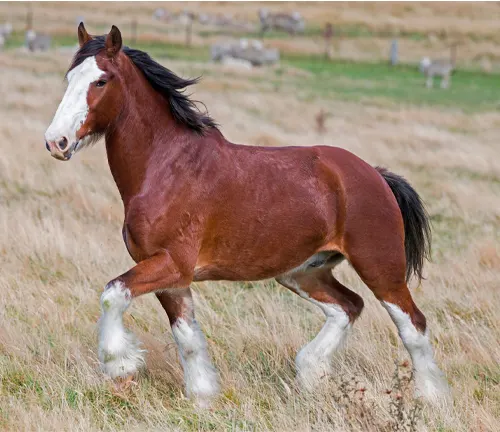
Historically, they played a crucial role in agriculture and industrial settings, where their formidable strength was essential for heavy pulling and farm work. Today, while their role in modern society has shifted, they still captivate the hearts of horse enthusiasts worldwide. Whether parading in shows, participating in riding or driving events, or simply as beloved pets, Clydesdales continue to be a breed that represents a blend of power, elegance, and a deep-rooted history in equine culture. Their enduring appeal lies not just in their physical prowess but also in their gentle, approachable nature, making them a true treasure in the world of horse breeds.
| Specification | Details |
|---|---|
| Origin | Clyde Valley, Scotland |
| Height | Typically 16 to 18 hands (64 to 72 inches) |
| Weight | Approximately 1,800 to 2,200 pounds |
| Body Type | Heavy draft horse, muscular and strong |
| Coat Colors | Commonly bay, also black, brown, and roan |
| Markings | White blaze on face, white feathering on legs |
| Temperament | Gentle, friendly, and patient |
| Lifespan | Around 20 to 25 years |
| Use | Show, riding, agricultural work, parades |
| Gait | Active walk, powerful trot |
| Unique Features | Pronounced withers, large hooves, feathering at legs |
| Health Concerns | Prone to certain hoof and leg issues |
| Maintenance | Requires regular grooming and exercise |
| Diet | High-fiber diet with adequate nutrients |
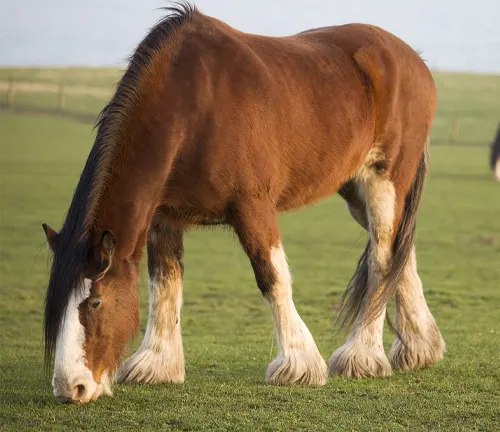
The Clydesdale is a horse breed renowned for its size, strength, and gentle temperament. Originating from the Clyde Valley in Scotland, these majestic animals have played a significant role in agricultural and industrial history. Their grace and power captivate horse enthusiasts worldwide.
Physical Characteristics
Impressive Size and Build
Clydesdales are renowned for their massive size, standing between 16 to 18 hands tall and weighing between 1,800 to 2,300 pounds. Their strong, muscular bodies, broad chests, and sturdy legs make them an awe-inspiring sight.

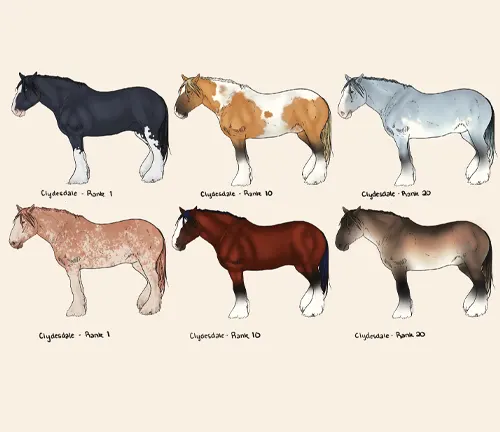
Notable Coat Color
One of the most striking features of Clydesdale horses is their distinctive coat color. Most commonly, they have a bay color with white markings, especially on their legs and face. These white markings, known as “chrome,” add to their visual appeal.
Temperament and Behavior
Clydesdales are gentle giants. Known for their calm and friendly demeanor, they are excellent around people, making them suitable for various equine activities, from parades to therapy.
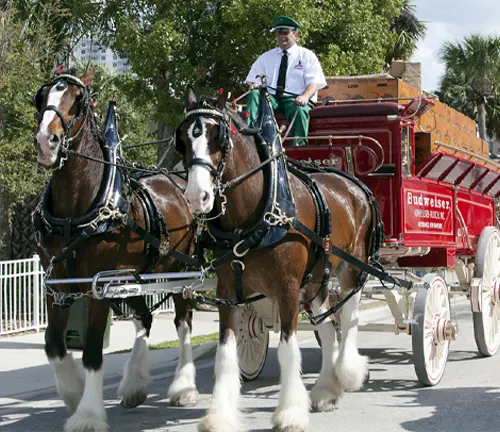
Historical Uses of Clydesdale Horses
A Scottish Legacy
The Clydesdale horse derives its name from the River Clyde in Scotland, where they were first bred in the early 18th century. These horses were initially known as “Flemish horses” due to their Belgian ancestry, but they later became synonymous with the Clydesdale region.
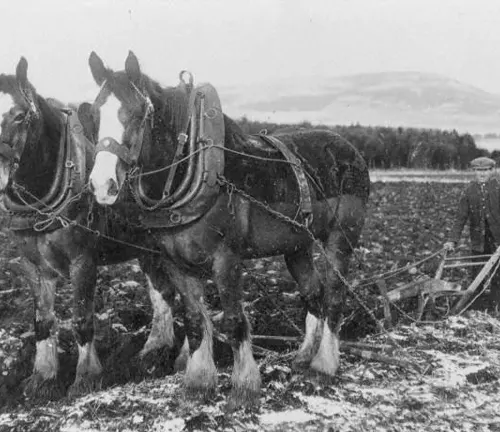
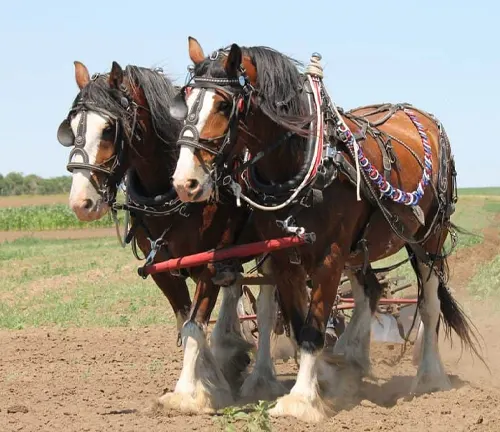
Early Development
The breed was meticulously developed by Scottish farmers and breeders who aimed to create robust and powerful horses suitable for heavy farm work and transportation. They selectively bred local mares with imported stallions to achieve their desired traits.
Clydesdale Horses in Modern Times
Today, Clydesdales are celebrated for their recreational uses, from riding to driving. They also hold a special place in culture, often seen in parades and shows.
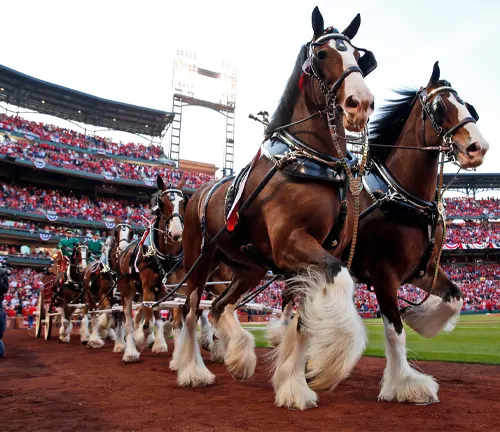
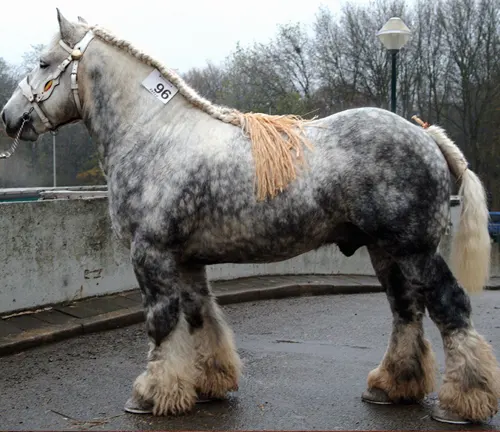
Breeding and Genetics
Breeding Clydesdales focuses on maintaining their unique characteristics. However, like many purebreds, they face genetic health issues, which breeders strive to mitigate through responsible practices.
Care and Management
Caring for a Clydesdale involves a balanced diet, regular grooming, and consistent health care. Their size demands specific attention to diet and exercise to maintain their well-being.
Training and Handling
Training Clydesdales requires patience and skill. They are versatile, suitable for novice and experienced riders, but their size and strength demand respect and understanding from their handlers.
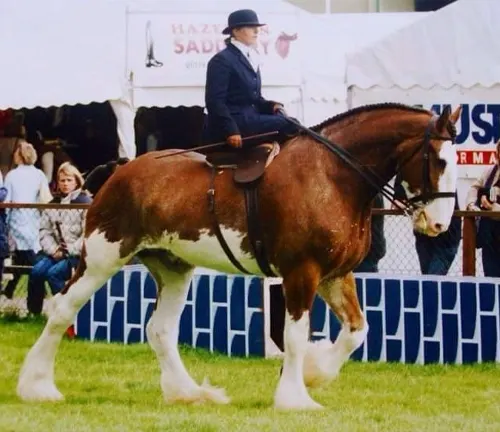
Versatility and Uses
Agricultural Work
Clydesdales were initially bred for heavy farm labor, where their strength and endurance were put to good use in plowing fields and hauling heavy loads.
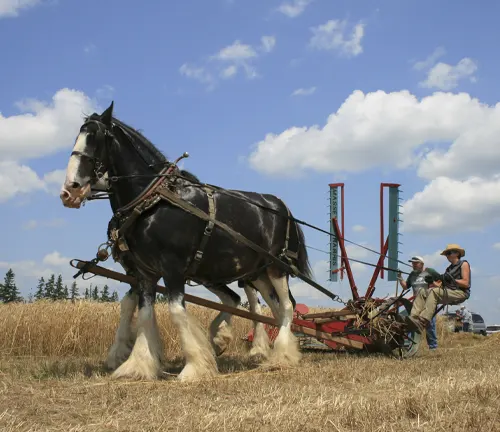


Iconic Brewery Horses
In the 19th century, Clydesdales gained fame as brewery horses. Companies like Anheuser-Busch used them to deliver beer, solidifying their place in American culture. Today, they continue to be associated with beer brands and promotional events.
Showmanship and Competitions
Their grace and elegance have also made Clydesdales popular in the show ring. They participate in various equestrian competitions, showcasing their beauty and poise.
Clydesdales Around the World
Global Popularity
Clydesdales are not confined to Scotland; they have a global presence. Countries like the United States, Canada, and Australia have embraced these magnificent horses.
Cultural Significance
In some regions, Clydesdales hold deep cultural significance. For instance, in the United States, they are an iconic symbol of the Budweiser brand and are featured prominently in Super Bowl commercials.
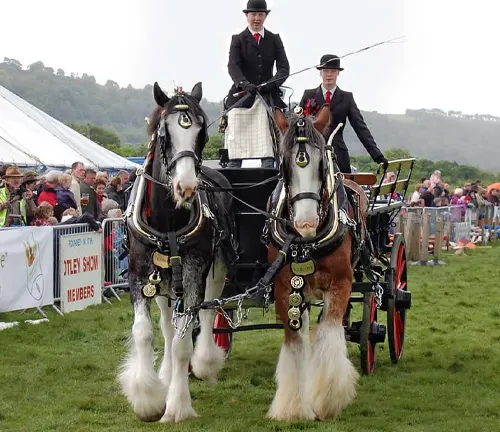
Different Species
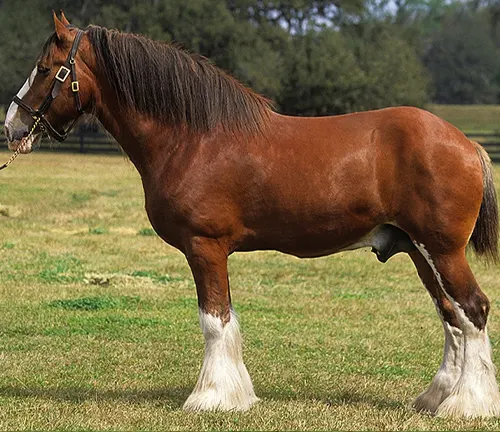
Traditional Clydesdale
The traditional Clydesdale is what most people envision when they think of this breed. They are known for their impressive stature, standing at around 16 to 18 hands high and weighing between 1,800 to 2,200 pounds. These horses have a striking appearance with a bay coat and white markings on their legs and face.
Show Clydesdale
The show Clydesdale is bred specifically for exhibition purposes. They are meticulously groomed and trained to showcase the breed’s grace and elegance. Show Clydesdales often have even more defined white markings and a sleeker appearance compared to their traditional counterparts.
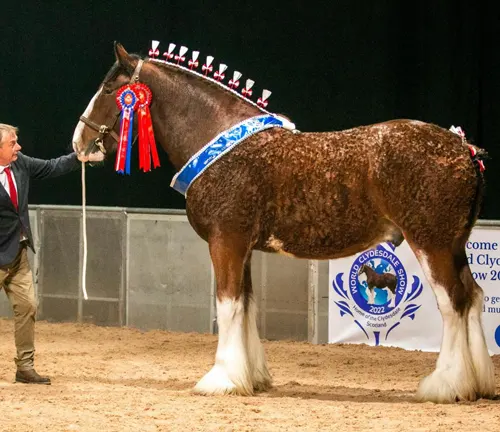
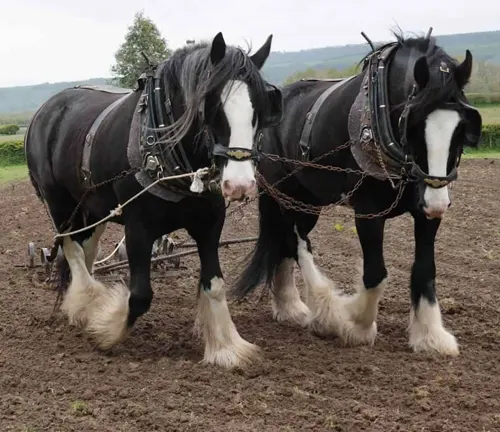
Working Clydesdale
As the name suggests, working Clydesdales are bred for labor-intensive tasks. They are robust and muscular, with an emphasis on strength and endurance. These horses are often used in agriculture and forestry, where their power is put to good use.
European Clydesdale
In Europe, Clydesdales have adapted to their local environments, resulting in variations such as the European Clydesdale. These horses may have subtle differences in their conformation and temperament due to their regional breeding.
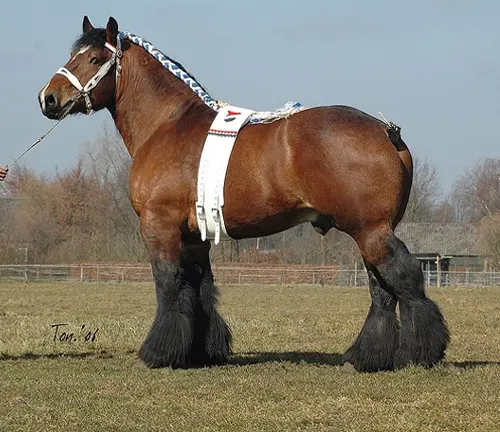

Miniature Clydesdale
On the opposite end of the spectrum, miniature Clydesdales are a smaller version of the breed. Standing at just 10 to 12 hands high, these adorable horses are often kept as pets or used for therapeutic purposes.
Rare Clydesdale Varieties
Beyond these common species, there are some rarer Clydesdale varieties, each with its unique characteristics and histories. These include the Australian Clydesdale and the Canadian Clydesdale, which have evolved to meet the specific needs of their respective regions.
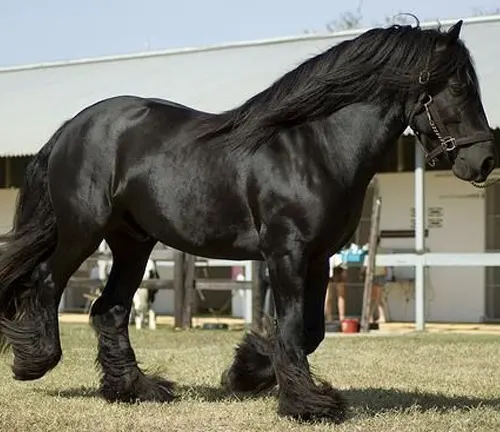
Frequently Asked Question (FAQs)
- What is the origin of Clydesdale horses?
Clydesdale horses originated in the Clyde Valley in Scotland. They were initially bred for heavy farm and industrial work. - How big do Clydesdale horses get?
Clydesdales are among the largest horse breeds, typically standing 16 to 18 hands (64 to 72 inches) tall and weighing 1,800 to 2,200 pounds. - What are the common colors of Clydesdale horses?
The most common coat color is bay, but they can also be black, brown, chestnut, gray, or roan, often with white markings. - What is the lifespan of a Clydesdale horse?
Clydesdale horses generally live for about 20 to 25 years, though this can vary based on factors like health, diet, and care. - Are Clydesdale horses good for beginners?
Despite their size, Clydesdales are known for their gentle and calm temperament, making them suitable for experienced handlers and often appropriate for beginner riders under proper supervision. - What are the common uses of Clydesdale horses today?
Today, they are used for riding, parades, shows, and promotional activities. They are also still used for some types of draft work. - How much does a Clydesdale horse eat?
Due to their size, Clydesdales require a significant amount of food, usually a high-fiber diet including quality hay and grains, along with supplements as needed. - What kind of care do Clydesdale horses require?
They need regular grooming, especially for their feathered legs to prevent skin issues. Routine veterinary care, hoof care, and a proper diet are also crucial. - Are there any health issues common in Clydesdale horses? Like many large breeds, Clydesdales can be prone to certain health issues, including hoof problems like laminitis and leg issues such as lymphedema.
- How much does a Clydesdale horse cost?
The cost of a Clydesdale can vary widely based on factors like age, pedigree, training, and condition. They can range from a few thousand to tens of thousands of dollars. - Can Clydesdale horses be used for riding?
Yes, they can be ridden and are known for their smooth gait. However, due to their size, they require saddles and tack that are appropriately sized. - What is special about Clydesdale horses’ feet?
They have large, hard hooves and are known for their distinct feathering – long, flowing hair on their lower legs. - How are Clydesdale horses different from other draft breeds?
Clydesdales are particularly known for their size, unique feathering on their legs, and a generally more active gait compared to other draft breeds. - Can Clydesdale horses live in hot climates? While they are hardy and adaptable, their thick coat and feathering can make them susceptible to heat stress. Proper care and management are necessary in warmer climates.
- What is the history of Clydesdale horses in agriculture and industry?
Historically, they were indispensable in agriculture, forestry, and city work, known for their ability to pull heavy loads and perform demanding tasks.



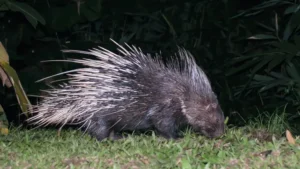

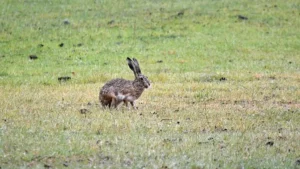
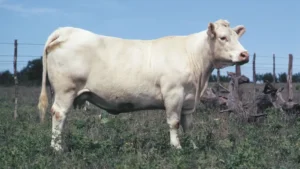

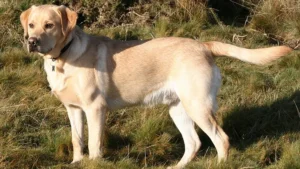
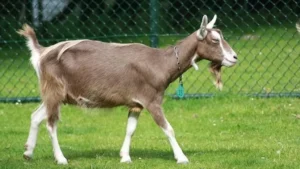




Leave your comment